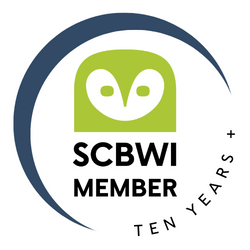I’m a serial mover, so I think a lot about housing and what turns a dwelling into a home. It should surprise no one, then, that I love books about homes and what makes some homes special. Today’s Perfect Picture Book is one of those books that shows us the special places that some creatures call home.

Title: Home
Written & Illustrated By: Isabelle Simler
Translated By: Vineet Lal
Publisher/Date: Eerdmans Books for Young Readers/2024 (originally published in France as Maison, Éditions Courtes et Longues/2022)
Suitable for Ages: 4 and up
Themes/Topics: animal homes, poetry, nonfiction
Opening:
I’ve been to some truly amazing homes.
Brief Synopsis: A collection of 27 poems about animal homes.
Links to Resources:
- Learn about animal homes and try these science experiments;
- Take a walk near your home or in the woods and collect materials to build a nest for a favorite bird or insect;
- Write a poem about a favorite animal’s home;
- Learn more in the back matter about the amazing creatures featured in this poetry collection.
Why I Like this Book:
In 27 poems accompanied by gorgeous illustrations, author/illustrator Simler explores the different homes that birds, sea creatures, insects, reptiles, and other animals inhabit. I loved exploring these different dwellings, and I think kids will, too.
In a foreword, quoted above, Simler shares that she “had to bend, and shrink, and squeeze, and let myself be transformed in weird and wonderful ways” to imagine “life in these homes.” From the text and accompanying illustrations, it’s clear that Simler has adopted the viewpoints of her subjects – a unique and interesting way to share their stories and build empathy among readers.
Even the poem titles raise our curiosity – who knew that a comet moth lives in a “Silky Apartment,” that a satin bowerbird builds a “Blue Pavilion,” or that a honeybee resides in a “Wax Palace.” Drawing comparisons between these dwellings and our own will, I think, help kids relate to them.
The creatures featured are not your run-of-the-mill farm or zoo animals. Simler includes lesser-known fan worms, weaver ants, alpine marmots, and many more. Such a fascinating array of animals is sure to capture the interest of budding naturalists and build awareness of the diversity of creatures and habitats in our world.
I highly recommend Home for school and home libraries – this is a picture book that all ages will enjoy.
A Note about Craft:
As I mentioned above, Simler crafted poems about each of the highlighted creature’s home from the perspective of that creature. That she chose first-person point-of-view without anthropomorphizing them is amazing. Equally amazing, Simler wrote these poems in French, and Lal translated them into English – no easy task, I’m sure.
This Perfect Picture Book entry is being added to Susanna Hill’s Perfect Picture Book list. Check out the other great picture books featured there!
















